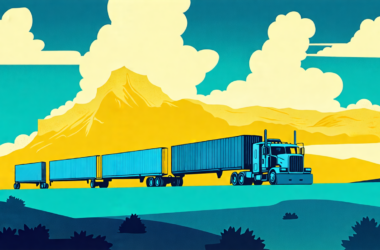Table of Contents Show
Environmental Concerns Throughout the Mining Cycle
Uranium mining, like any extractive industry, presents a range of environmental challenges throughout its lifecycle. These issues can be categorized into several key stages:
Exploration and Development
Even before mining begins, the exploration process itself can have environmental impacts. Activities such as seismic testing, drilling, and land clearing can disrupt ecosystems, displace wildlife, and contribute to soil erosion.
Mining Operations
The two primary methods of uranium extraction, open-pit and underground mining, both carry distinct environmental concerns. Open-pit mining involves the removal of large amounts of overburden (soil and rock), leading to habitat destruction, landscape alteration, and potential contamination of surface water and groundwater. Underground mining, while generally having a smaller surface footprint, can still generate significant waste rock and tailings, and presents risks of groundwater contamination and subsidence.
Waste Management and Tailings
Uranium mining produces large quantities of waste rock and tailings, which contain radioactive materials and heavy metals. Improper management of these materials can lead to severe environmental consequences, including:
- **Water contamination:** Rainfall and runoff can leach contaminants from tailings into surface water and groundwater, posing risks to aquatic life, ecosystems, and human health.
- **Air pollution:** Wind erosion can transport radioactive dust from tailings piles, impacting air quality and potentially causing respiratory problems.
- **Radioactive contamination:** Tailings can emit radon gas, a radioactive decay product of uranium, which can accumulate in enclosed spaces and increase the risk of lung cancer.
Decommissioning and Reclamation
Once a uranium mine ceases operation, the site requires decommissioning and reclamation to mitigate long-term environmental risks. This involves:
- **Closure and capping of tailings facilities:** To prevent the release of contaminants, tailings are often covered with layers of clay, soil, and vegetation.
- **Water treatment:** Contaminated water may require treatment before release into the environment.
- **Land restoration:** Efforts are made to restore the land to a stable and productive state, which can involve re-vegetation, soil amendments, and erosion control measures.
Additional Environmental Considerations
Beyond the immediate impacts of mining operations, uranium mining raises several broader environmental concerns:
Water Usage
Uranium mining, especially in arid regions, can place significant demands on water resources. Large volumes of water are needed for dust suppression, ore processing, and tailings management, potentially competing with other water uses and impacting local water availability.
Greenhouse Gas Emissions
The entire uranium mining and processing cycle, from extraction to milling and transportation, contributes to greenhouse gas emissions. These emissions are primarily associated with energy consumption, the use of heavy machinery, and the transportation of materials.
Biodiversity and Habitat Loss
Uranium mining can lead to the loss and fragmentation of habitat, impacting biodiversity and disrupting ecological processes. This is particularly concerning in regions with sensitive ecosystems or endangered species.
Indigenous Communities and Land Rights
Uranium mining often occurs in close proximity to Indigenous communities, raising concerns about land rights, cultural heritage, and potential health impacts. Engagement with Indigenous peoples and respect for their rights is crucial in mitigating these concerns.
Mitigating Environmental Impacts
While uranium mining presents significant environmental challenges, there are ongoing efforts to mitigate these impacts. Some key strategies include:
- **Improved mining technologies:** Innovations in mining techniques and equipment aim to reduce waste generation, water usage, and energy consumption.
- **Best practices for tailings management:** Implementing stricter regulations and engineering controls to prevent contamination and ensure long-term stability of tailings facilities.
- **Progressive reclamation:** Restoring land as mining progresses to minimize the overall environmental footprint and facilitate ecosystem recovery.
- **Environmental monitoring and impact assessments:** Regularly monitoring environmental conditions and conducting comprehensive impact assessments to identify and address potential risks.
- **Stakeholder engagement:** Engaging with local communities, Indigenous groups, and environmental organizations to address concerns and ensure responsible mining practices.








/cdn.vox-cdn.com/uploads/chorus_asset/file/25447697/1589887063.jpg?w=380&resize=380,250&ssl=1)
